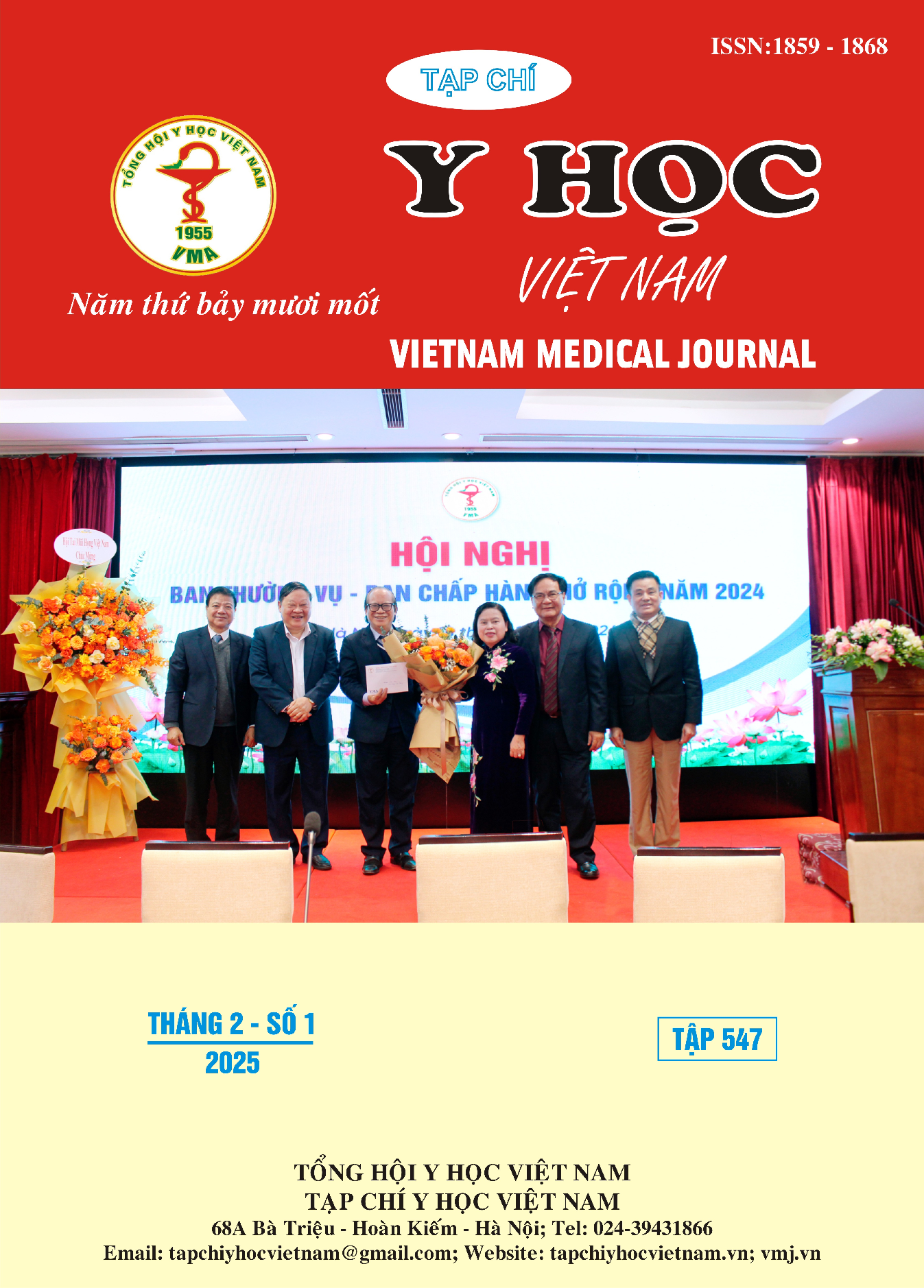ĐÁNH GIÁ GIAI ĐOẠN ĐẦU HIỆU QUẢ ĐIỀU TRỊ TIÊM BEVACIZUMAB DƯỚI KẾT MẠC TRÊN BỆNH NHÂN CÓ TÂN MẠCH GIÁC MẠC
Main Article Content
Abstract
Purpose: This study aims to evaluate the effectiveness of reducing corneal neovascularization by subconjunctival bevacizumab injection before keratoplasty. Methods: A prospective case series included 10 eyes of 10 patients with corneal neovascularization that are indications for keratoplasty. Each eye received 3 doses of bevacizumab 2.5 mg/0.1 mL at 1-month intervals. Clinical examinations were performed during 3 months after treatment. Results: Corneal neovascularization gradually decreased over time of follow-up and decreased significantly after 3 months. The corneal neovascularization area was 6,49 ± 4,16%% at baseline, 4,71 ± 3,82% at 3 months (reduced 28,29 ± 14,91%, p=0,01); the neovascular invasion area was 61,84 ± 22,08% at baseline, 59,31 ± 23,20% at 3 months (reduced 4,58 ± 7,78%, p=0,06); the average vessels diameter was 0.062 ± 0.014mm at baseline, 0.056 ± 0.017 mm at 3 months (reduced 11,18 ± 12,62%, p=0,01), and the extent decreased from 7,30 ± 3,43 to 6,90 ± 3,70 clock hours (reduced 6,79 ± 14,91%, p=0,005). The only local complication observed was subconjunctival hemorrhage at the injection site accounting for 10%. In addition, no systemic complications were recorded. Conclusion: Short-term results show that subconjunctival bevacizumab can be safely and effectively used to treat corneal neovascularization before keratoplasty, suggesting a strategy to improve keratoplasty prognosis.
Article Details
Keywords
Corneal neovascularization, bevacizumab, keratoplasty.
References
2. Đạt NT. Đánh giá kết quả ghép giác mạc tại bệnh viện mắt từ 2012 đến 2022. Luận án Bác sĩ nội trú. Đại học Y Dược thành phố Hồ Chí Minh. 2023;
3. Hos D, Le VNH, Hellmich M, et al. Risk of corneal graft rejection after high-risk keratoplasty following fine-needle vessel coagulation of corneal neovascularization combined with bevacizumab: a pilot study. Transplantation Direct. 2019;5(5)
4. Benayoun Y, Adenis J-P, Casse G, Forte R, Robert P-Y. Effects of subconjunctival bevacizumab on corneal neovascularization: results of a prospective study. Cornea. 2012; 31(8):937-944.
5. Bahar I, Kaiserman I, McAllum P, Rootman D, Slomovic A. Subconjunctival bevacizumab injection for corneal neovascularization. Cornea. 2008;27(2):142-147.
6. Agarwal S, Angayarkanni N, Iyer G, et al. Clinico-biochemical correlation of the effect of subconjunctival bevacizumab for corneal neovascularization. Cornea. 2014;33(10):1016-1021.
7. Chu H-S, Hu F-R, Yang C-M, et al. Subconjunctival injection of bevacizumab in the treatment of corneal neovascularization associated with lipid deposition. Cornea. 2011; 30(1):60-66.
8. Shah SSA. Efficacy of subconjunctival injection of bevacizumab in regressing corneal neovascularisation. Journal of the College of Physicians and Surgeons Pakistan. 2019;29(5): 430-434.
9. You IC, Kang IS, Lee SH, Yoon KC. Therapeutic effect of subconjunctival injection of bevacizumab in the treatment of corneal neovascularization. Acta ophthalmologica. 2009;87(6): 653-658.


